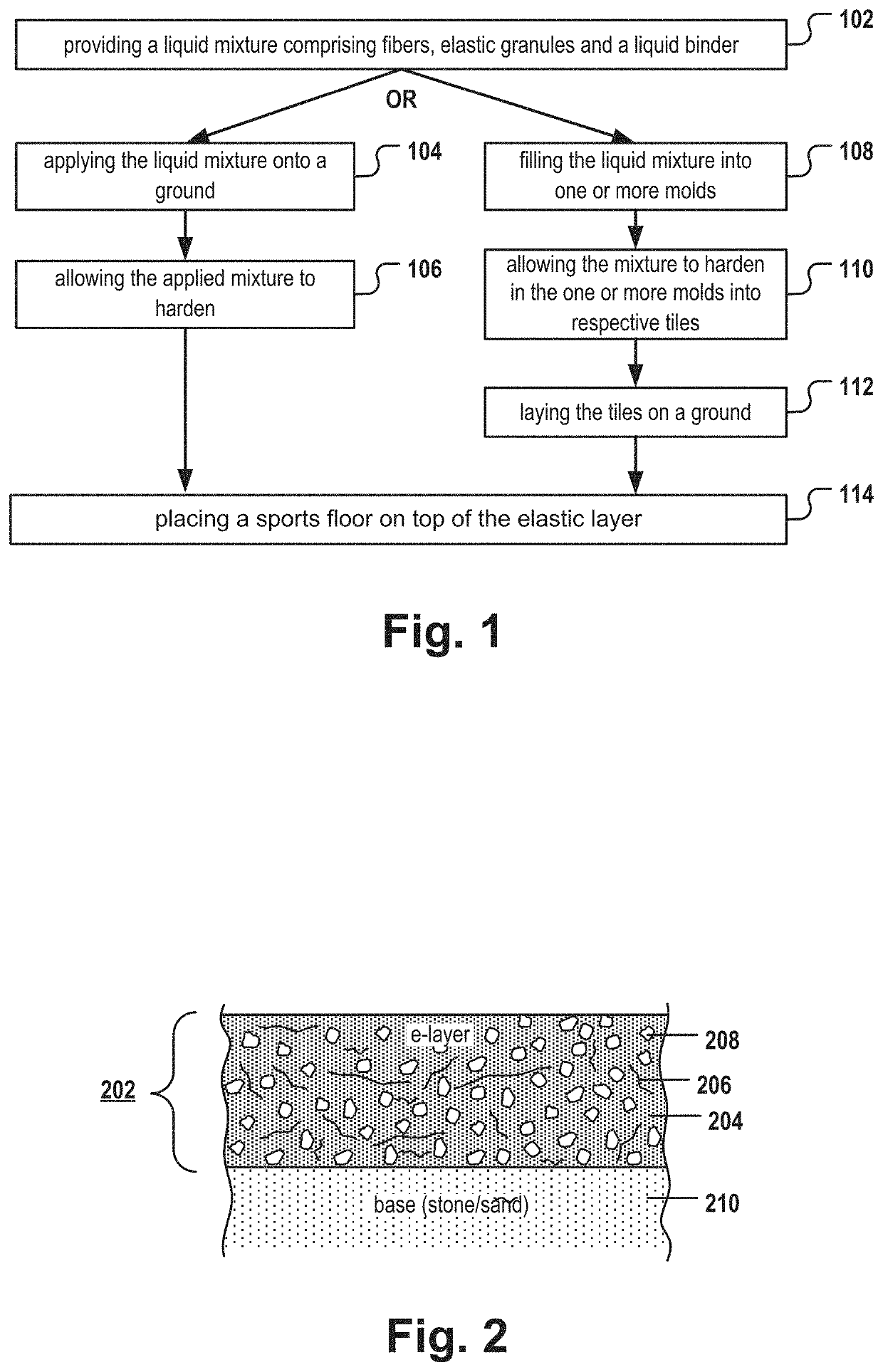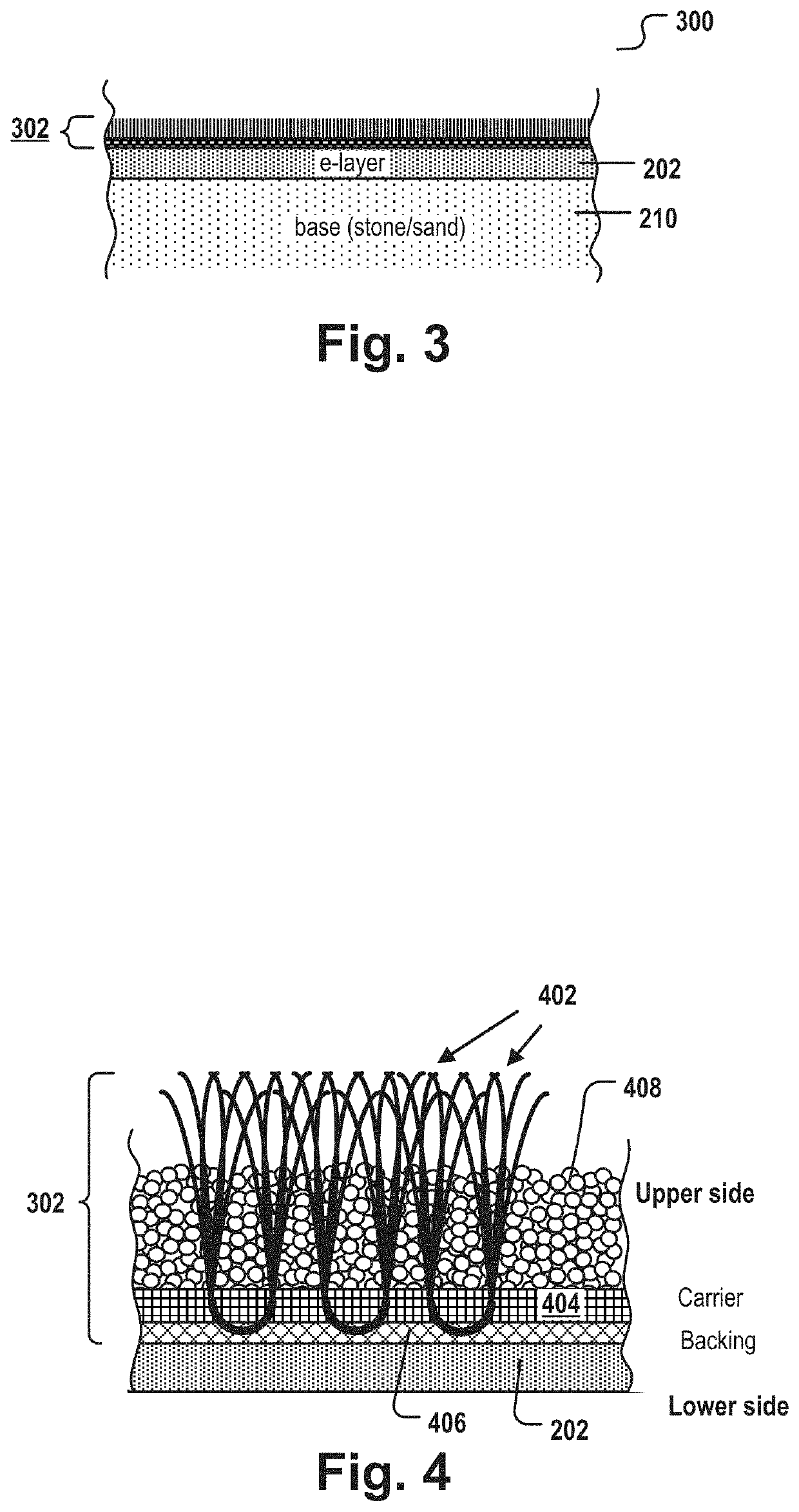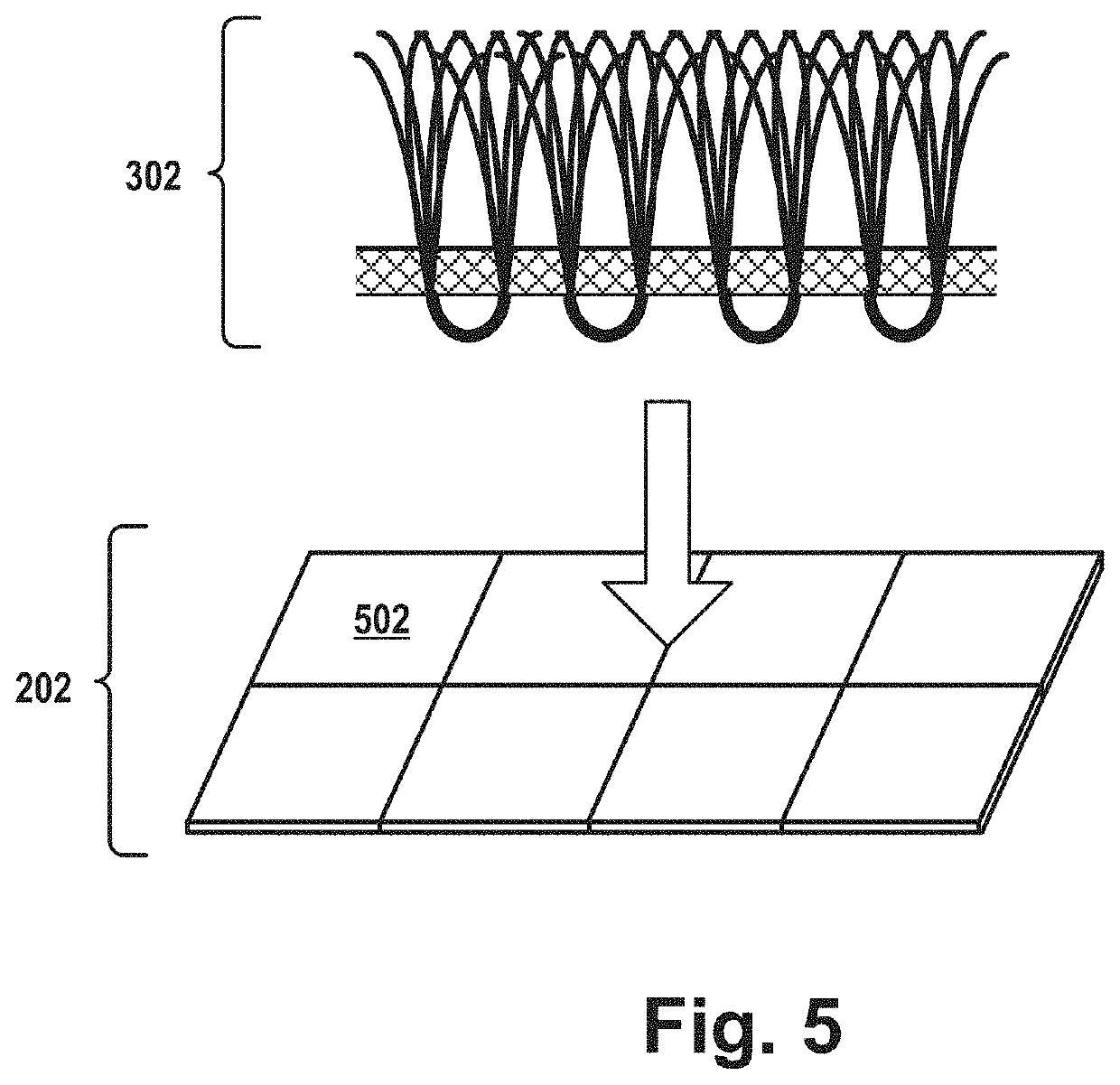Elastic layers with fibers
- Summary
- Abstract
- Description
- Claims
- Application Information
AI Technical Summary
Benefits of technology
Problems solved by technology
Method used
Image
Examples
Embodiment Construction
[0069]Like-numbered elements in these figures either are equivalent elements or perform the same function. Elements that have been discussed previously will not necessarily be discussed in later figures if the function is equivalent.
[0070]FIG. 1 is a flow chart of a method of manufacturing an e-layer (202). The e-layer is designed and adapted for use as a support layer of a sports floor, e.g. of an artificial turf (302). The method comprises a step 102 of providing a liquid mixture. The mixture comprises fibers 206, elastic granules 208 and a liquid binder 204. For example, the mixture can be created manually or automatically (e.g., by a stirring device). The mixture is mixed until the granules, the fibers, and the binder are homogeneously mixed. Depending on the particular composition of the mixture, this may take 2-20 minutes. The greater the amount of elastic granules, the higher the elasticity of the e-layer. The greater the amount of fibers, the higher the tensile strength of t...
PUM
| Property | Measurement | Unit |
|---|---|---|
| Fraction | aaaaa | aaaaa |
| Fraction | aaaaa | aaaaa |
| Length | aaaaa | aaaaa |
Abstract
Description
Claims
Application Information
 Login to View More
Login to View More - R&D
- Intellectual Property
- Life Sciences
- Materials
- Tech Scout
- Unparalleled Data Quality
- Higher Quality Content
- 60% Fewer Hallucinations
Browse by: Latest US Patents, China's latest patents, Technical Efficacy Thesaurus, Application Domain, Technology Topic, Popular Technical Reports.
© 2025 PatSnap. All rights reserved.Legal|Privacy policy|Modern Slavery Act Transparency Statement|Sitemap|About US| Contact US: help@patsnap.com



